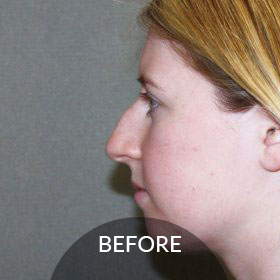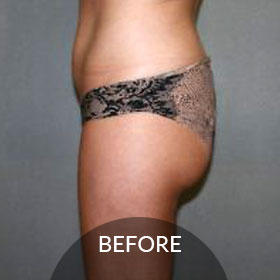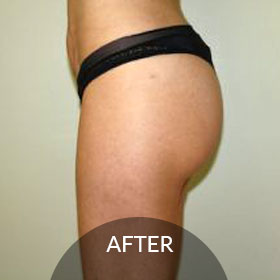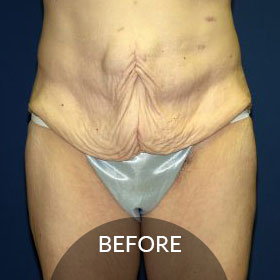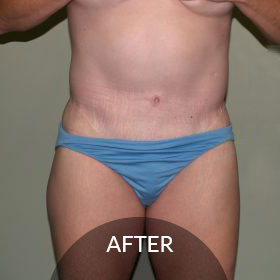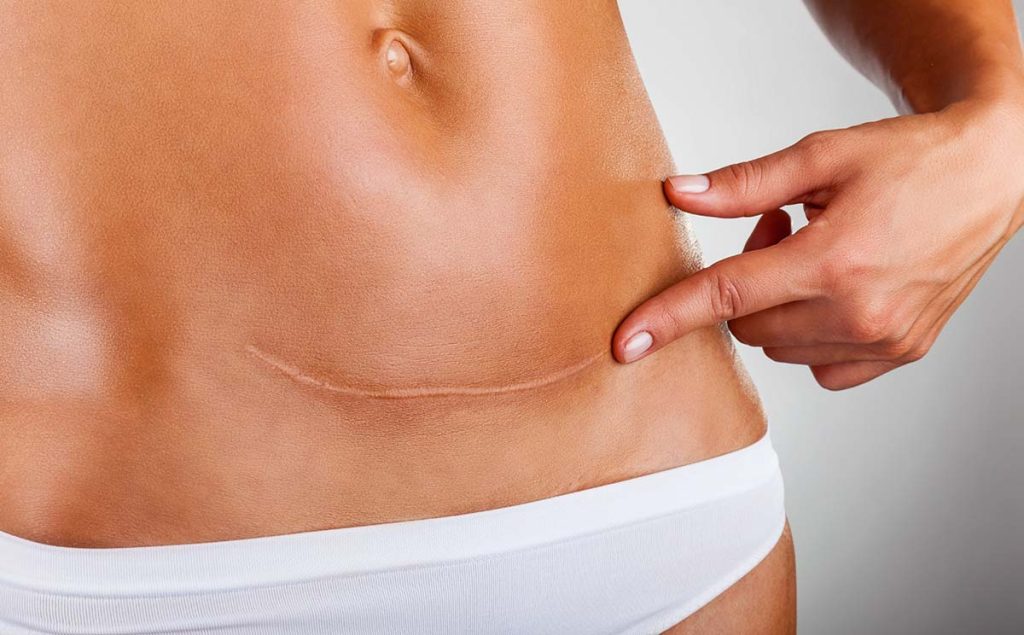Scarring is a natural part of the body’s healing process after surgery. Understanding how scars form can help patients have realistic expectations and make informed decisions about their surgical procedures. And caring for scars after plastic surgery is an essential aspect of the recovery process. Dr. Gregory Fedele, a renowned board-certified plastic surgeon with years of experience, is dedicated to providing comprehensive scar care options to his patients in Cleveland.
Dr. Fedele employs advanced surgical techniques to minimize scarring during every plastic surgery procedure he performs. By using meticulous suturing methods and placing incisions in discrete locations, he aims to create the least noticeable scars possible.
Discuss your chosen surgical procedure with us and find out more about scar care during your recovery. Contact our office at (216) 464-1616 or fill out our simple inquiry form to book your personal consultation with Dr. Fedele.
How the Body Forms Scars
Although not every plastic surgery procedure involves long scars, some procedures, particularly those that reconfigure and lift tissues, do. After these surgeries, the body initiates a complex wound-healing process to repair the damaged tissues. This process involves several biological events that work together to restore the integrity of the skin.
Inflammatory Response
Immediately after surgery, the body triggers an inflammatory response, which helps remove debris and foreign substances from the wound site. Inflammation is essential for initiating the healing process but can also contribute to scar formation if not properly controlled.
Collagen Production
After the inflammatory response, fibroblasts, specialized cells responsible for producing collagen, migrate to the site of the incision. Collagen is the primary component of scar tissue and provides strength and structure to the healing wound, helping it to retain 50–80% of the tensile strength of normal skin. (1) Fibroblasts begin synthesizing and depositing collagen, creating a framework for tissue regeneration.
Tissue Remodeling
As the wound progresses toward closure, the focus shifts to tissue remodeling. Remodeling involves the reorganization and realignment of collagen fibers to improve the strength and flexibility of the newly formed scar tissue. This process can take several months to years, depending on the individual and the extent of the surgical procedure.
No Two Scars Are the Same
It’s important to note that every scar is unique. Factors such as genetics, age, skin type, and the location of the incision can influence scar formation. Some individuals may have a predisposition to develop hypertrophic or keloid scars, which are raised and thicker than normal scars. These types of scars result from an overproduction of collagen during the healing process. (2)
While complete elimination of scars is not possible, there are techniques available to minimize their appearance. Plastic surgeons employ various strategies, such as the following.
- Advanced wound closure techniques
- Well-suited surgical tapes and dressings
- Patient-initiated post-operative scar management
Common Procedures
Although some procedures, such as breast augmentation, liposuction, and the Brazilian Butt Lift do not require long incisions (and therefore, longer scars), there are many plastic surgery procedures that do, including the following.
Facelift
During a facelift procedure, Dr. Fedele makes incisions in inconspicuous areas behind the hairline or around the ears. These incisions are placed in these strategic locations to enable the lifting and tightening of the underlying tissues.
Dr. Fedele employs several techniques to minimize the appearance of facelift scars. The placement of incisions in natural skin creases and hair-bearing areas helps to camouflage the scars. Additionally, meticulous surgical techniques, including careful tissue handling and precise wound closure, also contribute to improved facelift scar outcomes.
Breast Lift (Mastopexy)
In mastopexy, or breast lift surgery, there are different incision types that can be used, depending on a patient’s treatment plan. The choice of incision type depends on the severity of breast sagging and excess skin.
It is important to note that postoperative redness, itching, or raised scars are possible after mastopexy, but these typically improve over time. With proper wound care and scar management techniques, such as scar massage and the use of silicone gel sheets, the appearance of mastopexy scars can be minimized.
Tummy Tuck
Scarring after abdominoplasty, also known as a tummy tuck, is a common concern for patients considering this transformative procedure. The incision for an abdominoplasty is typically made horizontally along the lower abdomen, just above the pubic area. The length of the incision will depend on the extent of correction needed, but it is usually placed low enough to be concealed by underwear or swimwear. In some cases, a second incision may be made around the navel to address excess skin in the upper abdomen.
The healing process after abdominoplasty involves the natural formation of scars. Initially, the incision site will appear red, raised, and possibly slightly swollen. Over time, the scar will gradually fade and flatten, although its final appearance will vary among individuals. It is essential to note that each person’s healing process is unique, and factors such as genetics, age, and skin type can influence scar formation.
Arm Lift
An arm lift, also known as brachioplasty, is a surgical procedure designed to remove excess skin and fat from the upper arms, resulting in a tighter, more sculpted contour. During the procedure, incisions are made along the inner arm, typically from the armpit to the elbow. The length and location of the incisions may vary depending on the extent of correction needed.
Dr. Fedele takes great care in selecting the optimal placement for incisions to minimize visible scarring. He strategically places the incisions in areas that can be easily concealed by clothing or naturally occurring creases in the skin. This approach ensures that any residual scarring is discrete and blends seamlessly with the surrounding skin.
Caring for Scars
When it comes to caring for scars after plastic surgery, Dr. Fedele takes a comprehensive approach to ensure optimal healing and minimal visibility. With our expertise in scar management techniques, we prioritize:
- Scar minimization
- Post-operative scar care
- Scar maintenance
- Scar revision techniques
Scar Minimization Strategies
Dr. Fedele employs various techniques to minimize the appearance of scars during surgery, such as careful wound closure and the use of advanced suturing methods, to reduce tension on the incision site and optimize scar healing.
Post-operative Scar Care
Proper postoperative scar care is crucial for ensuring favorable outcomes. Dr. Fedele will provide you with detailed instructions on how to clean and protect the incision site, as well as recommend appropriate topical treatments or ointments to promote healing. Additionally, he may recommend the use of silicone sheets or gels, which have been shown to effectively prevent abnormal scar formation. (3)
Scar Maintenance Protocols
Once your scar has reached its optimal outcome, it is important to maintain its appearance long-term. Dr. Fedele will provide you with personalized scar maintenance protocols, which may involve sunscreen application, scar massage, or the use of specialized skincare products. These measures can help preserve the improved appearance of your scar and protect it from potential damage.
Scar Revision Techniques
If you are dissatisfied with the appearance of an existing scar, Dr. Fedele specializes in scar revision techniques. Through meticulous surgical interventions, he can modify the scar, adjust its position, or combine it with other plastic surgery procedures to achieve a more aesthetically pleasing result.
Personal Consultation
Every patient’s plastic surgery journey is unique. That’s why it is crucial to consult with a surgeon who can provide personalized advice and guidance based on your specific needs and circumstances. During a personal consultation with Dr. Fedele at our Cleveland-based practice, he will carefully assess your specific situation and discuss your concerns regarding scar formation and appearance. He will then evaluate your medical history and skin quality and provide you with an individualized treatment plan that meets your unique aesthetic goals.
Cost of Scar Management in Cleveland
The cost of caring for scars after plastic surgery will depend on various factors such as the type of procedure performed, the extent of scarring, and the specific scar management techniques used. Dr. Gregory Fedele and our dedicated team understand the importance of comprehensive scar care to optimize your aesthetic results. Contact us at (216) 464-1616 to learn more about our comprehensive scar treatment options or to schedule a consultation.
Read more about plastic surgery procedures in Cleveland by reading Dr. Fedele’s blog.
FAQ
How long does it take for scars to heal after plastic surgery?
The healing time for scars varies depending on the individual and the type of procedure performed. Generally, scars will begin to fade within a few weeks to months after surgery. However, it can take up to a year or more for scars to fully mature and blend with the surrounding skin.
Are there any non-surgical treatments for scar reduction?
Yes, non-surgical treatments such as laser therapy may be effective in reducing scar visibility. These treatments work by promoting collagen remodeling and stimulating skin regeneration. Your surgeon can recommend the most appropriate treatment based on your specific scar characteristics.
Can scar revision surgery improve the appearance of my scars?
Scar revision surgery may be an option if you are unhappy with the appearance of your scar. This procedure aims to minimize the scar’s visibility by removing or rearranging the existing scar tissue. It is important to consult with a board-certified plastic surgeon to determine if scar revision surgery is suitable for you.
References
- Mathew-Steiner SS, Roy S, Sen CK. Collagen in Wound Healing. Bioengineering. 2021;8(5):63. doi:https://doi.org/10.3390/bioengineering8050063
- Betarbet U, Blalock TW. Keloids: A Review of Etiology, Prevention, and Treatment. The Journal of Clinical and Aesthetic Dermatology. 2020;13(2):33-43. https://www.ncbi.nlm.nih.gov/pmc/articles/PMC7158916/
- Bleasdale B, Finnegan S, Murray K, Kelly S, Percival SL. The Use of Silicone Adhesives for Scar Reduction. Advances in Wound Care. 2015;4(7):422-430. doi:https://doi.org/10.1089/wound.2015.0625




